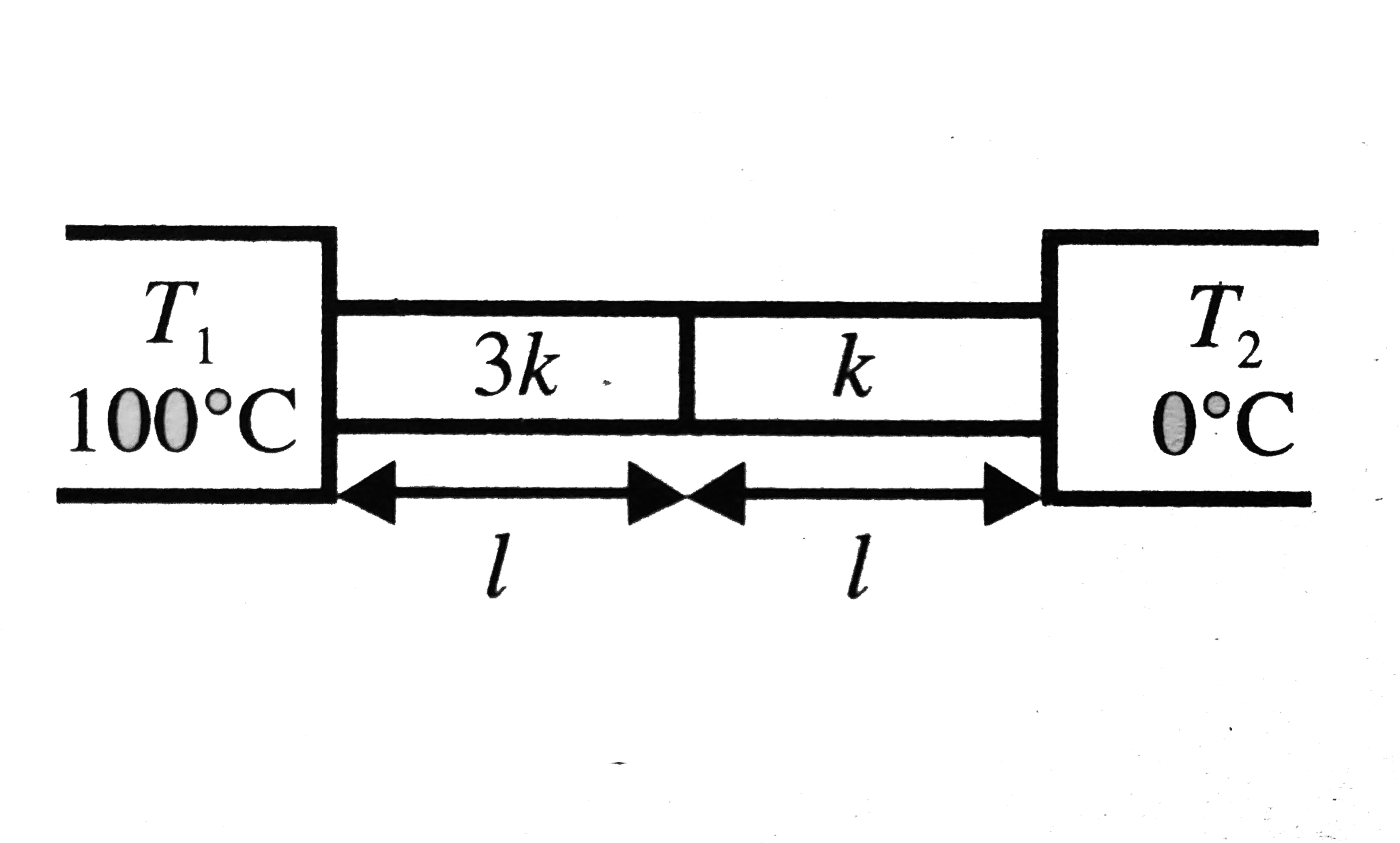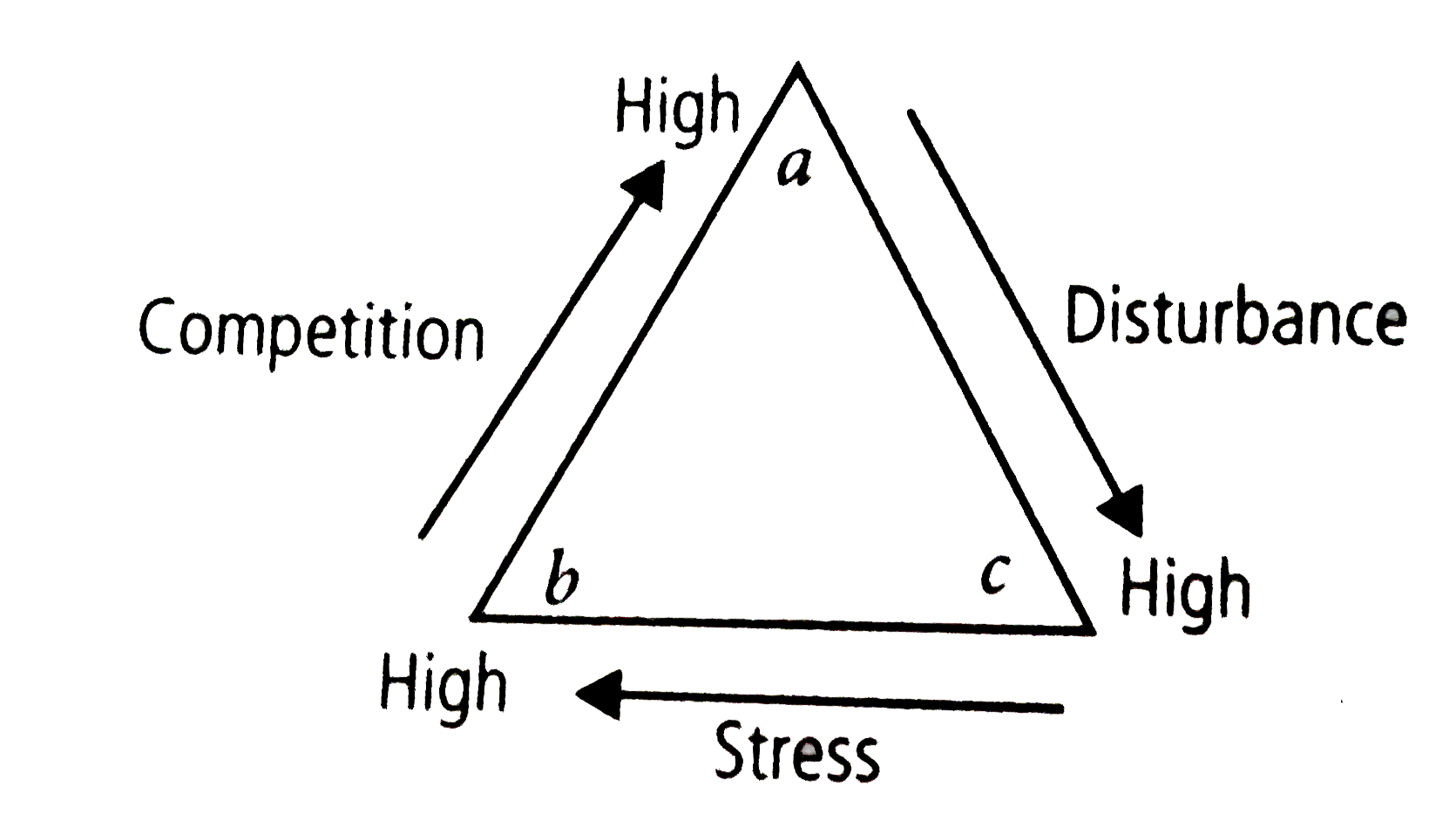Study the following statements and select the correct ones.
(i) Organisms capable to tolerate a wide range of temperature are called stenothermal organisms.
(ii) Thermal tolerance of different species determine their grographical distribution to a large extent
(iii) Avarge temperature in tropical deserts in summer is <50∘C.
(iv) Thermal springs cannot sustain life due to very high average temperature i.e., >100∘C.
(i) only
(ii) only
(i),(ii) and (iii)
(i),(iii) and (iv)
The correct Answer is:B
To solve the question, we need to evaluate each statement one by one to determine if they are correct or incorrect.
1. Statement (i): "Organisms capable to tolerate a wide range of temperature are called stenothermal organisms."
- Evaluation: This statement is incorrect. Organisms that can tolerate a wide range of temperatures are called eurythermal organisms, not stenothermal. Stenothermal organisms can only tolerate a narrow range of temperatures.
- Conclusion: Incorrect.
2. Statement (ii): "Thermal tolerance of different species determines their geographical distribution to a large extent."
- Evaluation: This statement is correct. The ability of organisms to tolerate certain temperature ranges affects where they can live. For example, some species thrive in hot environments while others prefer cold climates.
- Conclusion: Correct.
3. Statement (iii): "Average temperature in tropical deserts in summer is < 50°C."
- Evaluation: This statement is incorrect. The average temperature in tropical deserts during summer typically exceeds 50°C. Therefore, the statement is false.
- Conclusion: Incorrect.
4. Statement (iv): "Thermal springs cannot sustain life due to very high average temperature i.e., > 100°C."
- Evaluation: This statement is incorrect. Thermal springs can indeed sustain life, particularly extremophiles like certain archaea that thrive in high-temperature environments, even above 100°C.
- Conclusion: Incorrect.
Final Conclusion:
The only correct statement is (ii). Therefore, the answer is that only statement (ii) is correct.
- Evaluation: This statement is incorrect. Organisms that can tolerate a wide range of temperatures are called eurythermal organisms, not stenothermal. Stenothermal organisms can only tolerate a narrow range of temperatures.
- Conclusion: Incorrect.
- Evaluation: This statement is correct. The ability of organisms to tolerate certain temperature ranges affects where they can live. For example, some species thrive in hot environments while others prefer cold climates.
- Conclusion: Correct.
- Evaluation: This statement is incorrect. The average temperature in tropical deserts during summer typically exceeds 50°C. Therefore, the statement is false.
- Conclusion: Incorrect.
- Evaluation: This statement is incorrect. Thermal springs can indeed sustain life, particularly extremophiles like certain archaea that thrive in high-temperature environments, even above 100°C.
- Conclusion: Incorrect.
The only correct statement is (ii). Therefore, the answer is that only statement (ii) is correct.
Topper's Solved these Questions
- BOOK - NCERT FINGERTPS ENGLISHCHAPTER - ORGANISMS AND POPULATIONEXERCISE - HOTS5videos
ORGANISMS AND POPULATION
- BOOK - NCERT FINGERTPS ENGLISHCHAPTER - ORGANISMS AND POPULATIONEXERCISE - NCERT20videos
ORGANISMS AND POPULATION
- BOOK - NCERT FINGERTPS ENGLISHCHAPTER - MOLECULAR BASIS OF INHERITANCEEXERCISE - Molecular Basis Of Inheritance151videos
MOLECULAR BASIS OF INHERITANCE
- BOOK - NCERT FINGERTPS ENGLISHCHAPTER - PRACTICE PAPERSEXERCISE - Practice paper150videos
PRACTICE PAPERS
Similar Questions
Study the following statements and select the correct ones.
i) Organisms restricted to a narrow range of temperatures are called eurythermal.
ii) Organisms capable of tolerating a wide range of temperature are called stenothermal organisms.
iii) The levels of thermal tolerance of different species determine to a large extent their geographical disrributio.
iv) Temperature affects the kinetics of enzymes.View SolutionHow many statements/s are true ?
A. Temperature is the most relevant ecologically environmental factor. It ranges from subzero levels in polar areas and high altitudes to >50∘C in tropical deserts in summer.
B. A few organisms can tolerate and thrive in a wide range of temperature they are called eurythermal.
C. The productivity and distribution of plants are also heavily dependent on water .
D. In the aquatic environment , the sediment characteristics often determine the type of benthic animals that can thrive there.View Solution
Knowledge Check
- Question 1 - Select One
Read the following statements and select the correct ones.
(i) All the colour components of the visible spectrum are available for marine plants living in different depths of the ocean.
(ii) Many herbs and shrubs in rainforests adapt to photosynthesise optimally under very low light conditions as they grow under canopy trees
(iii) Gradual increase in average global temperature will affect the distributional range of some species.
(iv) The quality of soil does not depend upon the weathering process.A(i) and (ii)B(ii) and (iv)C(ii) and (iii)D(i) and (iv) - Question 2 - Select One
Consider the following three statements and select the correct option stating which one is true (T) and which one is false (F).
(i) Oparin of Russia and Haldane of England proposed that the first form of life could have come from pre-existing nonliving organic molecules (e.g, RNA, protein etc.) and that formation of life was preceded by chemical evolution.
(ii) Based on observations made during a sea voyage around the world. Charles Darwin concluded that existing living forms share similarities to varying degrees only among themselves.
(iii) Evolution by natural selection must have started when cellular forms of life with different metabolic capability originated on Earth.A(i)(ii)(iii)FTTB(i)(ii)(iii)TFTC(i)(ii)(iii)TTFD(i)(ii)(iii)FFT - Question 3 - Select One
Some statements are given below each with one or two blanks. Select the option that correctly fills up the blanks.
(i) High concentration of DDT disturbs ____ in birds, which causes ____.
(ii) ____ burns more efficiently as compared to petrol and diesel.
(iii) ___ is the natural ageing of a lake which occurs due to accumulation of ____.
(iv) ______ reduces the number of organisms which are sensitive to high temperature.
(v) Irreparable computers and other electronic goods are known as ____.A(i) calcium metabolism, thinning of egg shell (ii) CNG (iii) Eutrophication, nitrates and phosphates (iv) Thermal wastewater (v) electronic wasteB(i) protein metabolism, thickening of egg shell (ii) CNG (iii) Eutrophication, nitrates and phosphates (iv) Thermal wastewater (v) electronic wasteC(i) calcium metabolism, thinning of egg shell (ii) Coal (iii) Biomagnification, nitrates and phosphates (iv) Organic wastewater (v) inorganic wasteD(i) calcium metabolism, thckening of egg shell (ii) CNG (iii) Biomagnification, DDT and mercury (iv) Thermal wastewater (v) electronic waste
Match column I with column II and select the correct option from the given codes.
ColumnIColumnIIA.Eurythermal(i)Able to tolerate narrow range of temperatureB.Stenothermal(ii)A stage of suspended developmentC.Conformers(iii)Body temperature changes with ambient temperatureD.Diapause(iv)Able to tolerate wide range of temperatureView Solution
Two rods A and B of same length and cross-sectional area are connected in series and a temperature difference of 100∘C is maintained across the combination as shoen in Fig. If the thermal conductivity of the rod A is 3 k and that of rod B is k, Then
i.Determine the thermal resistance of each rod.
ii. determine the heat current flowing through each rod.
iii. determine the heat current flowing through each rod.
iv. plot the variation of temperature along the length of the rod.View Solution(i) A powdered substance (A) on treatment with fusion mixture gives a green coloured compound (B). (ii) The solution of (B) in boiling water on acidification with dilute H2SO4 gives a pink coloured compound (C).
(iii) The aqueous solution of (A) on treatment with NaOH and Br2− water gives a compound (D).
(iv) A solution of (D) in conc. HNO3 on treatment with lead peroxide at boiling temperature produced a compound (E) which was of the same color at that of (C).
(v) A solution of (A) on treatment with a solution of barium chloride gave a white precipitate of compound (F) Which was insoluble in conc. HNO3 and conc. HCl.
Consider the following statement :
(I) Anions of both (B) and (C ) are diamagnetic and have tetradhedral geometray.
(II) Anions of both (B) and ( C) are paramagnetic and have tetrahedral geometry.
(III) Anions of (B) is paramagnetic and that of (C ) is diamagnetic but both have same tetrahedral geometry.
(IV) Green coloured compound (B) in a neutral of acidic medium disproportionates to give (C ) and (D).
Of these select the correct one from the code given :View SolutionIdeal gas equation is represented as PV=nRT. Gases present in universe were fond ideal in the Boyle's temperature range only and deviated more from ideal gas behavior at high pressure and low temperature.
The deviation are explained in term of compressibility factor z. For ideal behavior Z=PVnRT=1. the main cause to show deviavtion were due to wrong assumptions made about forces oif attractions (which becomes significant at high pressure ) and volume V occupied by molecules in PV=nRT is supposed to be volume of gas or the volume of container in which gas is placed by assuming that gaseous molecules do not have appreciable volume. Actually volume of the gas is that volume in which each molecule of gas can move freely. If volume occupied by gaseous molecule is not negligible, then the term V would be replaced by the ideal volume which by available for free motion of each molecule of gas in 1 mole gas.
Vactual= volume of container -volume occupied by molecules
=v−b
Where b represent the excluded volume occupied by molecules present in one mole of gas.
Similarly for n mole gas
Vactual=v−nb
As the pressure approaching zero i.e. at very low pressure. The curves plotted between compressibility factor Z and P for n mole of gases have the following characteristics.
(I) The intercept on y-axis leads to a value of unity
(II) The intercept on y axis leads to a value of 'n'
(III) The curves posses same slope for different gases at same temperature
(IV) The curves posses different slopes for different gases at same temperature.
(V) The curves posses same slope for a gas at different temperatureView SolutionThe figure below depicts life-histroy strategies for three plant species (a,b and c) along 3 axes : strength of competition with other organisms, level of distrubance in the habitat, and level of environmental stress in the habitat. Species a grows in habitats where competition among species b grown in habitats with and stress are low. Species b grows in habitats with high environmental stress but with low interspecies competition. Species c grows in highly disturbed habitats with low enviornmental stress.
 Which of the statements below is/are correct ?
Which of the statements below is/are correct ?
I. Characteristics of "a-type" plants are faster growth rate and short-lived leaves.
II. Desert annual plants are "b-type" species. they have rapid growth and produce large amount of seeds in a short time after rains.
III. Most plants belonging to "c-type" species would be herbaceous while "a-type" and "b-types" species are likely to be trees or shrubs.View Solution

